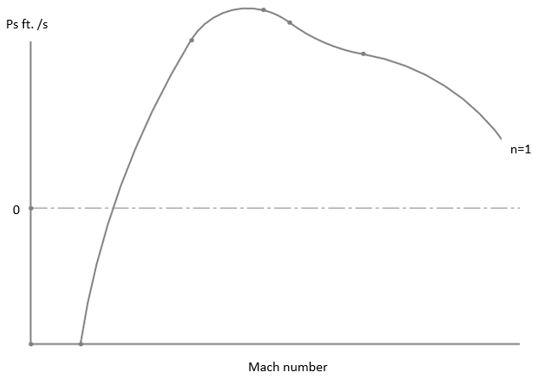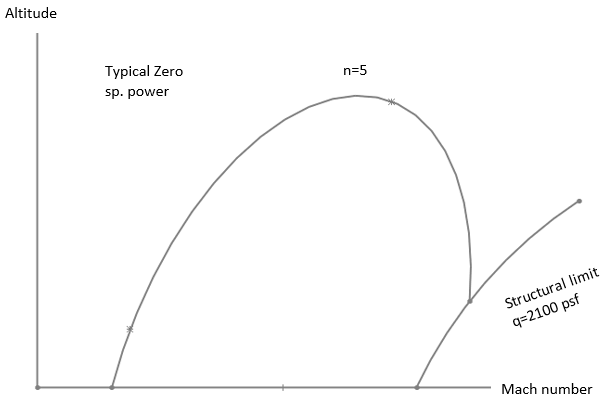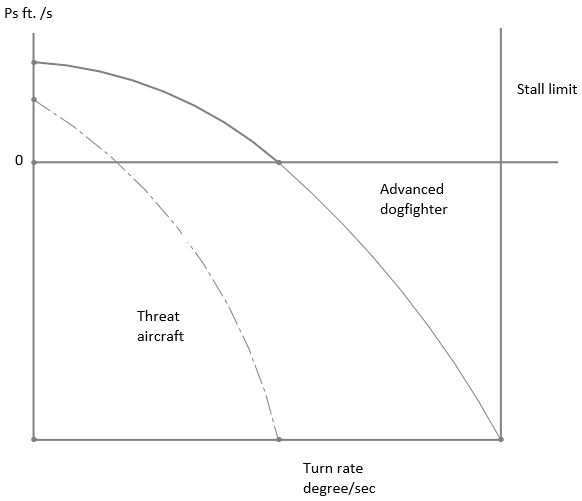This set of Aircraft Design Question Paper focuses on “Flight Mechanics – Energy-Maneuverability Methods”.
1. Total energy of an aircraft is defined as ____________
a) sum of the potential and kinetic energy
b) total kinetic energy only
c) total potential energy only
d) product of kinetic and potential energy
View Answer
Explanation: At any given point in time, the total energy of the aircraft or energy state of an aircraft is the sum of the potential energy and kinetic energy. Kinetic energy is equal to half of product of mass and square of velocity.
2. Total energy divided by the aircraft weight is term as ____________
a) Specific energy
b) KE
c) PE
d) Total energy
View Answer
Explanation: When total energy is divided by the aircraft weight then, it is termed as specific energy. Total energy of an aircraft is summation of kinetic and potential energy. It is often known as energy state of the aircraft at a given point in time.
3. If Total energy of an aircraft is found to be 1200 unit and kinetic energy is 1100 unit then, determine the potential energy.
a) 100 unit
b) 213 unit
c) 456 unit
d) 500 unit
View Answer
Explanation: Potential energy = Total energy – kinetic energy = 1200 – 1100 = 100 unit.
4. Find the total energy of an aircraft if kinetic energy and potential energy are 3600 and 1200 units respectively.
a) 4800 unit
b) 2800 unit
c) 1234 unit
d) 5789 unit
View Answer
Explanation: Total energy = kinetic energy + potential energy
= 3600 + 1200 = 4800 unit.
5. If sum of potential and kinetic energy of an aircraft is 5000 unit and aircraft weighs around 1200 unit then, determine specific total energy.
a) 4.16 unit
b) 2.89 unit
c) 40
d) 10.8
View Answer
Explanation: Specific total energy = total energy/weight
= 5000/1200 = 4.16 unit.
6. Unit of specific energy is __________
a) meter
b) meter per second
c) unit less
d) newton
View Answer
Explanation: Specific energy is defined as the ratio of total energy to the weight of the aircraft. Specific energy is defined by distance unit. It can be meter, feet etc. Meter per second is the unit of velocity or speed. Newton is standard unit of force.
7. If my aircraft has access power off 520 KW and it weighs around 1200 N then, determine the value of specific excess power.
a) 433.33 m/s
b) 123.88 ft. s
c) 119
d) 345.768m/s
View Answer
Explanation: Specific excess power = excess power/weight
= 520*1000/1200 = 433.33 m/s.
8. Following diagram represents _________

a) specific power vs mach number
b) mach number for various propulsion systems
c) drag polar
d) lift curve slope
View Answer
Explanation: The above diagram is showing specific power vs Mach number relations. As shown in the diagram, specific power is initially increases with Mach number but then after certain value of Mach number it begins to decrease.
9. Following diagram represents __________

a) zero specific power Contour
b) zero lift
c) zero drag
d) drag at zero lift
View Answer
Explanation: Above diagram is illustrating the concept of zero specific power Contour. As shown in the diagram, zero specific power Contours are plotted for different values of load factor. This chart is one of the major tools for evaluation of new fighters.
10. Following diagram represents _________

a) turn rate and specific power relations
b) turn radius only
c) power loading vs height
d) altitude effects on thrust
View Answer
Explanation: Typical turn rate and specific power relations can be observed in the diagram. Power loading is defined as the ratio of weight of the aircraft to the aircraft power. It is used to provide information about performance of the aircraft.
11. Find the approximate value of time required to change energy height. Consider change in energy height is 250m and specific power for the operation is 100m/s.
a) 2.5s
b) 4.5min
c) 2.5hr
d) 2.59min
View Answer
Explanation: Time required to change energy height can be approximated as follows,
Time required = change in energy height/specific power = 250/100 = 2.5 s.
12. If a Maneuver requires specific power of 1200 unit then, find the approximate value of fuel specific energy. Given thrust as 1000 unit and tsfc of 0.00042 unit.
a) 2857.14 unit
b) 1568.45 unit
c) 4500 unit
d) 6789 unit
View Answer
Explanation: Fuel specific energy = specific power / (thrust*tsfc)
= 1200/1000*0.00042 = 2857.14 unit.
Sanfoundry Global Education & Learning Series – Aircraft Design.
To practice all questions papers on Aircraft Design, here is complete set of 1000+ Multiple Choice Questions and Answers.
If you find a mistake in question / option / answer, kindly take a screenshot and email to [email protected]
- Check Aerospace Engineering Books
- Check Aircraft Design Books
- Practice Aerospace Engineering MCQs
- Apply for Aerospace Engineering Internship
- Practice Aeronautical Engineering MCQs
